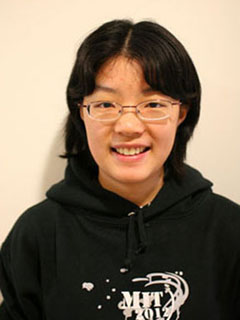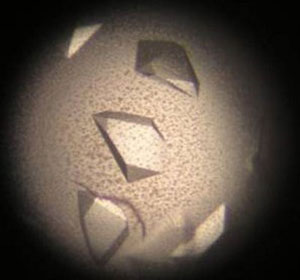
Anne Ye
*Anne won the 2009 oral presentation contest. She will present her work at the American Chemical Society meeting in the spring of 2010.
Massachusetts Institute of Technology
Drennan Lab
Mentor: Peter Goldman
Summer 2009
Crystallographic Approach to Protein Engineering BirA for Protein Tagging
Biotin protein ligases are responsible for attaching biotin, a small molecule, onto proteins involved in carboxyl group transfer during fatty acid synthesis. Efforts toward using E. coli biotin ligase (BirA) in protein tagging applications have produced a two-step labeling method. BirA is used to attach various small molecules to a 15-amino acid acceptor peptide (AP) sequence that is genetically incorporated onto the protein of interest, and a protein probe is then attached to the protein via the small molecule. To improve the efficiency of this method, efforts are being made to increase the promiscuity of BirA by protein engineering its binding pocket. This project will contribute toward these efforts by using x-ray crystallography to study the contacts between BirA and its substrates. We have obtained reproducible crystals of native unbound BirA, and soaked them in solutions of various combinations of small molecule substrates, including ATP, AP, and several biotin analogs. Attempts have been made to co-crystallize BirA with these substrates, but have not yet produced well-diffracting crystals. We solved a structure of native BirA to 1.98 Å and collected data sets for eleven BirA soaks. We are currently working on processing the soaking data to determine if we indeed have structures of BirA bound to its substrate(s).
